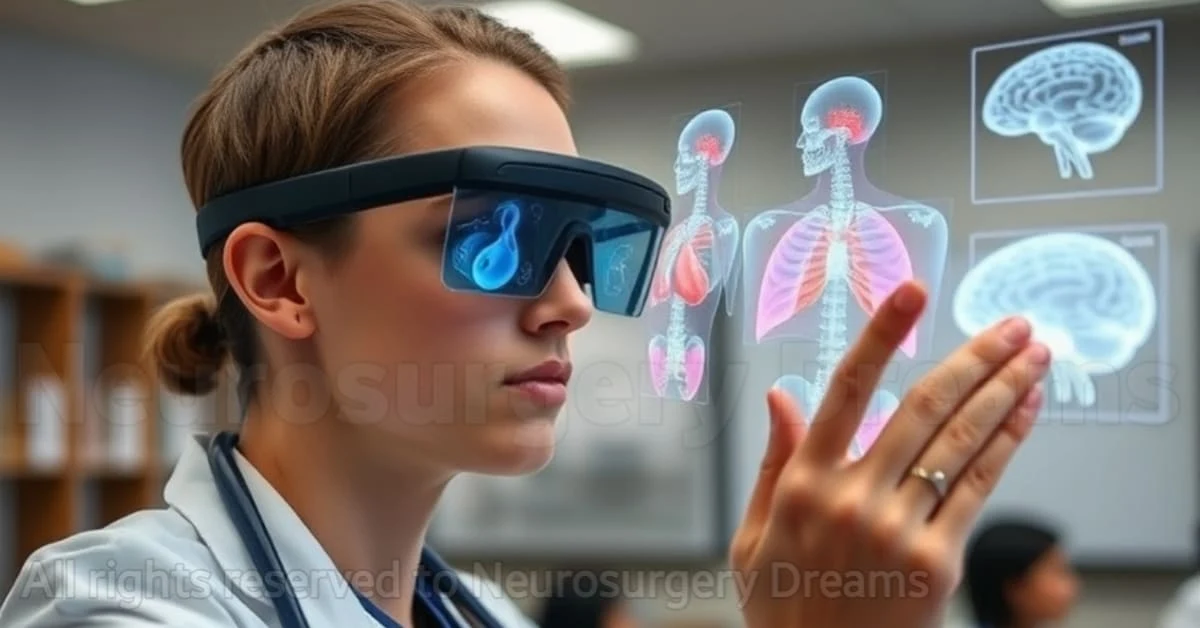How AI, VR, and AR are Revolutionizing Medical Education and Healthcare Training: The Future of Medical Learning
Introduction: The Rise of Medical Education Technology
Medical education is at a pivotal point in its history. With healthcare becoming more complex and technological, the tools used to train future doctors are evolving. Technologies like Artificial Intelligence in Neurosurgery: Revolutionizing Diagnosis and Treatment, Virtual Reality (VR), and Augmented Reality (AR) are transforming medical training in ways that were previously unimaginable. In the United States, these innovations are reshaping the curriculum, enhancing learning experiences, and better preparing medical professionals to tackle the demands of modern healthcare systems.
Advances in technology have always had a profound impact on education, but now, more than ever, the integration of AI, VR, and AR is fundamentally altering how students acquire skills, knowledge, and experience. These tools ensure that students are not just learning theory, but also gaining practical, real-world experience in a safe and controlled environment.
Key Tools Shaping Modern Medical Education
The tools currently shaping medical education in the USA are nothing short of revolutionary. Let's take a closer look at how AI, VR, and AR are transforming the learning experience:
Virtual Reality (VR): A New Dimension of Practice
Virtual Reality has become a cornerstone in medical training, offering immersive environments where students can practice and experience scenarios that would be difficult or dangerous to simulate in real life. With VR, medical students can perform virtual surgeries, diagnose medical conditions, and even interact with virtual patients in scenarios that mimic real-world medical emergencies. VR allows them to practice multiple times, honing their skills without any risk to actual patients. To learn more about cutting-edge techniques in brain surgery, check out Innovations in Brain Surgery: Cutting-Edge Techniques and Future Directions.

Artificial Intelligence (AI): Personalized Learning for Better Results
AI plays an essential role in personalizing medical education. AI-powered platforms analyze the strengths and weaknesses of students and provide tailored learning paths. By examining patterns in a student's performance, AI can recommend specific modules or exercises to focus on, ensuring that the training is suited to the learner’s pace and needs. Explore the integration of robotics and AI in neurosurgery in Emerging Techniques in Neurosurgery: From Robotics to AI Integration.

Augmented Reality (AR): Enhancing Anatomy and Beyond
Augmented Reality is enhancing the way medical students study anatomy and physiology. Instead of relying solely on textbooks and static diagrams, AR overlays digital information on the physical world. By wearing AR glasses or using a mobile device, students can view 3D models of organs and systems, allowing them to explore the human body from every angle. This makes learning about complex structures like the brain, heart, or lungs much more intuitive and interactive. Learn about advancements in neuroprosthetics in The Future of Neuroprosthetics: Enhancing Brain and Spinal Cord Function through Technology.

The Benefits of Medical Education Technology
Comprehensive Learning Experiences
The integration of technology into medical education allows students to experience the entire medical landscape before they even set foot in a hospital. From virtual surgeries to AI-assisted diagnostics, these tools give students the opportunity to practice rare or complex procedures that they might not otherwise encounter during their training. This broadens their skill set and increases their confidence as they move forward in their careers. Discover more about advancements in medical technology in Medical Technology in Neurosurgery: Advancements and Innovations.
Accessibility to World-Class Education
One of the most exciting aspects of these innovations is how they democratize medical education. With VR, AI, and AR technologies, students from different parts of the world can access high-quality medical training without leaving their homes. Virtual learning environments and AI-driven platforms can be accessed remotely, allowing students from underserved or remote areas to benefit from the same education as those in major medical centers.
Real-Time Feedback for Continuous Improvement
The real-time feedback provided by these technologies ensures that students are always aware of how they're progressing. For example, VR simulations can alert students if they're performing a step incorrectly during a virtual procedure. AI systems can track mistakes in diagnostic reasoning and provide suggestions on how to improve. This instantaneous feedback loop ensures continuous improvement and a higher level of competency by the time students graduate.
For more insights on the future of healthcare training, check out our article on The Future of Medical Education and Technological Innovations.

